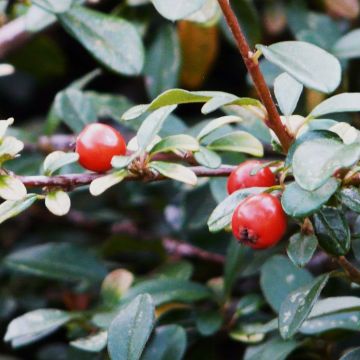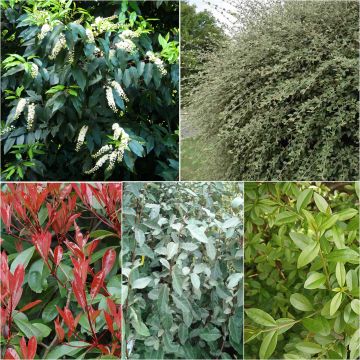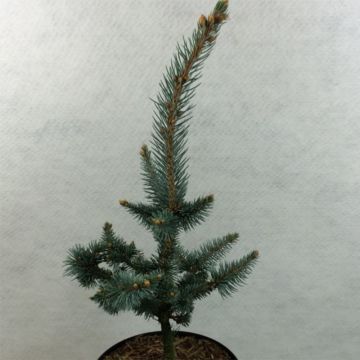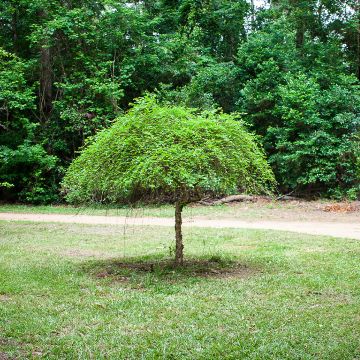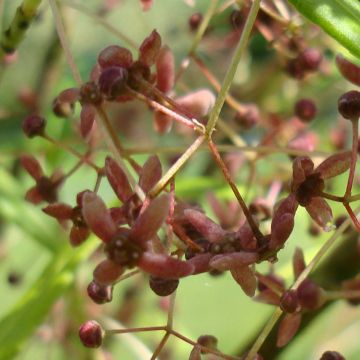Shipping country and language
Your country of residence may be:
Your country of residence is:
For a better user experience on our website, you can select:
Your shipping country:
Andorra
Austria
Belgium
Bulgaria
Canada
Chile
Croatia
Cyprus
Czechia
Denmark
Estonia
Finland
France
Germany
Greece
Hungary
Iceland
Ireland
Italy
Latvia
Lithuania
Luxembourg
Malta
Monaco
Netherlands
Poland
Portugal
Romania
Slovakia
Slovenia
Spain
Sweden
Switzerland
United Kingdom
We only deliver seed and bulb products to your country. If you add other products to your basket, they cannot be shipped.
Language:
French
German
Spanish
English
My Account
Hello
My wish lists
Plantfit
Log in / Register
Existing customer?
New customer?
Create an account to track your orders, access our customer service and, if you wish, make the most of our upcoming offers.


Melliosma dilleniifolia cuneifolia


Melliosma dilleniifolia cuneifolia
Meliosma cuneifolia
Melliosma cuneifolia
Good evening! While browsing the site, I came back to this page about this magnificent tree that is giving me trouble. Indeed, I had planted it in full sun, it was growing well but I had to move it because it is sensitive to the "burning" sun as my garden is very hot due to being surrounded by hedges and facing south. Its leaves shrivel and turn brown, scorched... so for the moment, and for the past year already, it is planted in a large pot placed in partial shade and it is thriving. It even flowered a little last year and it is already starting to show promising panicles. I love its well-veined leaves.
Françoise Marie, 07/05/2020
Why not try an alternative variety in stock?
View all →Order in the next for dispatch today!
Dispatch by letter from €3.90.
Delivery charge from €5.90 Oversize package delivery charge from €6.90.
More information
This item is not available in your country.
Schedule delivery date,
and select date in basket
This plant carries a 24 months recovery warranty
More information
We guarantee the quality of our plants for a full growing cycle, and will replace at our expense any plant that fails to recover under normal climatic and planting conditions.
From €5.90 for pickup delivery and €6.90 for home delivery
Express home delivery from €8.90.

Does this plant fit my garden?
Set up your Plantfit profile →
Description
Meliosma cuneifolia is a deciduous tree of moderate size, and of rare elegance. It is attractive with large green leaves and a lovely late spring flowering of large, upright, fragrant, cream-white panicles. They are followed by small shiny black fruits, resembling blackcurrant berries.
Meliosma cuneifolia is a small spreading deciduous tree, with dark brown-black bark, originating from China and belonging to the Sabiaceae family. It measures 4 to 8m (13 to 26ft) in height, with a spread of 3 to 4m (10 to 13ft). Its foliage consists of large strongly veined and slightly dentate leaves, resembling those of chestnut and hornbeam. They are reddish when young, then medium green, before developing beautiful golden hues in autumn. They are ovate, measure 8 to 12cm (3 to 5in) long by 3 to 4cm (1 to 2in) wide, widen from the base to the top, and are carried by a long petiole. The stems are matte black and covered with a fine down. From May to July, small deliciously scented flowers, with 5 cup-shaped, cream-white petals, bloom in large terminal upright panicles. They are followed by a fruiting in the form of small spherical black and shiny berries.
This medium-sized, sweetly scented flowering tree can be grown as a solitary specimen, or integrated into a group of trees and shrubs. Combine it with Japanese Angelica, Lamarck's Amelanchier, Japanese Snowbell, deutzia, White Horse Chestnut, or Chinese Lilac, for deliciously scented and flowering scenes.
Meliosma cuneifolia in pictures
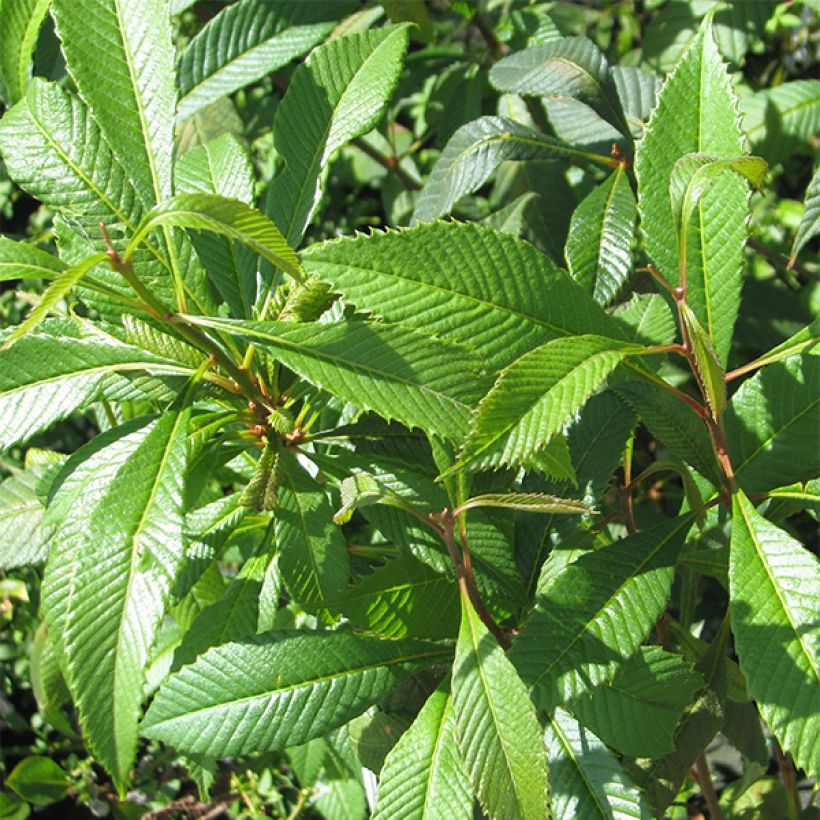

Plant habit
Flowering
Foliage
Botanical data
Melliosma
cuneifolia
Sabiaceae
China
Other Shrubs A to Z
Planting and care
Meliosma cuneifolia enjoys a sunny or semi-shady exposure, and good, light, fertile, well-drained, neutral to acidic garden soil. Although it can withstand temperatures down to -15°C (5°F), it is wise to choose a location sheltered from cold and drying winds in winter, as its new shoots can sometimes be damaged by late frosts. Planting is preferably done in autumn to promote root growth, or in spring. Pruning of this bush is not necessary, except for occasional pruning in February-March, aimed at removing rebellious or tangled stems to maintain a beautiful habit.
Planting period
Intended location
Care
- , onOrder confirmed
Reply from on Promesse de fleurs
Arbustes à floraison printanière
Haven't found what you were looking for?
Hardiness is the lowest winter temperature a plant can endure without suffering serious damage or even dying. However, hardiness is affected by location (a sheltered area, such as a patio), protection (winter cover) and soil type (hardiness is improved by well-drained soil).

Photo Sharing Terms & Conditions
In order to encourage gardeners to interact and share their experiences, Promesse de fleurs offers various media enabling content to be uploaded onto its Site - in particular via the ‘Photo sharing’ module.
The User agrees to refrain from:
- Posting any content that is illegal, prejudicial, insulting, racist, inciteful to hatred, revisionist, contrary to public decency, that infringes on privacy or on the privacy rights of third parties, in particular the publicity rights of persons and goods, intellectual property rights, or the right to privacy.
- Submitting content on behalf of a third party;
- Impersonate the identity of a third party and/or publish any personal information about a third party;
In general, the User undertakes to refrain from any unethical behaviour.
All Content (in particular text, comments, files, images, photos, videos, creative works, etc.), which may be subject to property or intellectual property rights, image or other private rights, shall remain the property of the User, subject to the limited rights granted by the terms of the licence granted by Promesse de fleurs as stated below. Users are at liberty to publish or not to publish such Content on the Site, notably via the ‘Photo Sharing’ facility, and accept that this Content shall be made public and freely accessible, notably on the Internet.
Users further acknowledge, undertake to have ,and guarantee that they hold all necessary rights and permissions to publish such material on the Site, in particular with regard to the legislation in force pertaining to any privacy, property, intellectual property, image, or contractual rights, or rights of any other nature. By publishing such Content on the Site, Users acknowledge accepting full liability as publishers of the Content within the meaning of the law, and grant Promesse de fleurs, free of charge, an inclusive, worldwide licence for the said Content for the entire duration of its publication, including all reproduction, representation, up/downloading, displaying, performing, transmission, and storage rights.
Users also grant permission for their name to be linked to the Content and accept that this link may not always be made available.
By engaging in posting material, Users consent to their Content becoming automatically accessible on the Internet, in particular on other sites and/or blogs and/or web pages of the Promesse de fleurs site, including in particular social pages and the Promesse de fleurs catalogue.
Users may secure the removal of entrusted content free of charge by issuing a simple request via our contact form.
The flowering period indicated on our website applies to countries and regions located in USDA zone 8 (France, the United Kingdom, Ireland, the Netherlands, etc.)
It will vary according to where you live:
- In zones 9 to 10 (Italy, Spain, Greece, etc.), flowering will occur about 2 to 4 weeks earlier.
- In zones 6 to 7 (Germany, Poland, Slovenia, and lower mountainous regions), flowering will be delayed by 2 to 3 weeks.
- In zone 5 (Central Europe, Scandinavia), blooming will be delayed by 3 to 5 weeks.
In temperate climates, pruning of spring-flowering shrubs (forsythia, spireas, etc.) should be done just after flowering.
Pruning of summer-flowering shrubs (Indian Lilac, Perovskia, etc.) can be done in winter or spring.
In cold regions as well as with frost-sensitive plants, avoid pruning too early when severe frosts may still occur.
The planting period indicated on our website applies to countries and regions located in USDA zone 8 (France, United Kingdom, Ireland, Netherlands).
It will vary according to where you live:
- In Mediterranean zones (Marseille, Madrid, Milan, etc.), autumn and winter are the best planting periods.
- In continental zones (Strasbourg, Munich, Vienna, etc.), delay planting by 2 to 3 weeks in spring and bring it forward by 2 to 4 weeks in autumn.
- In mountainous regions (the Alps, Pyrenees, Carpathians, etc.), it is best to plant in late spring (May-June) or late summer (August-September).
The harvesting period indicated on our website applies to countries and regions in USDA zone 8 (France, England, Ireland, the Netherlands).
In colder areas (Scandinavia, Poland, Austria...) fruit and vegetable harvests are likely to be delayed by 3-4 weeks.
In warmer areas (Italy, Spain, Greece, etc.), harvesting will probably take place earlier, depending on weather conditions.
The sowing periods indicated on our website apply to countries and regions within USDA Zone 8 (France, UK, Ireland, Netherlands).
In colder areas (Scandinavia, Poland, Austria...), delay any outdoor sowing by 3-4 weeks, or sow under glass.
In warmer climes (Italy, Spain, Greece, etc.), bring outdoor sowing forward by a few weeks.
